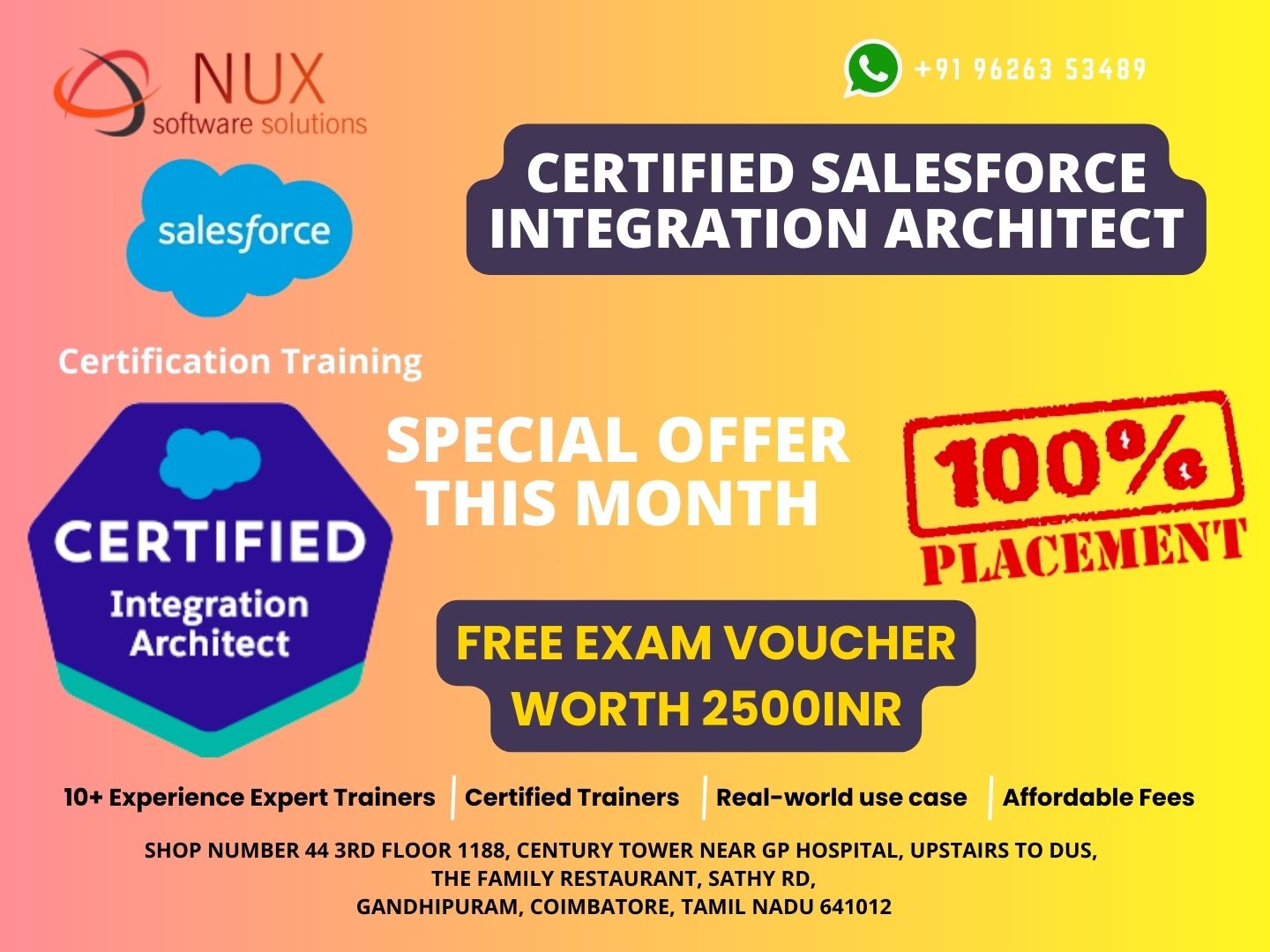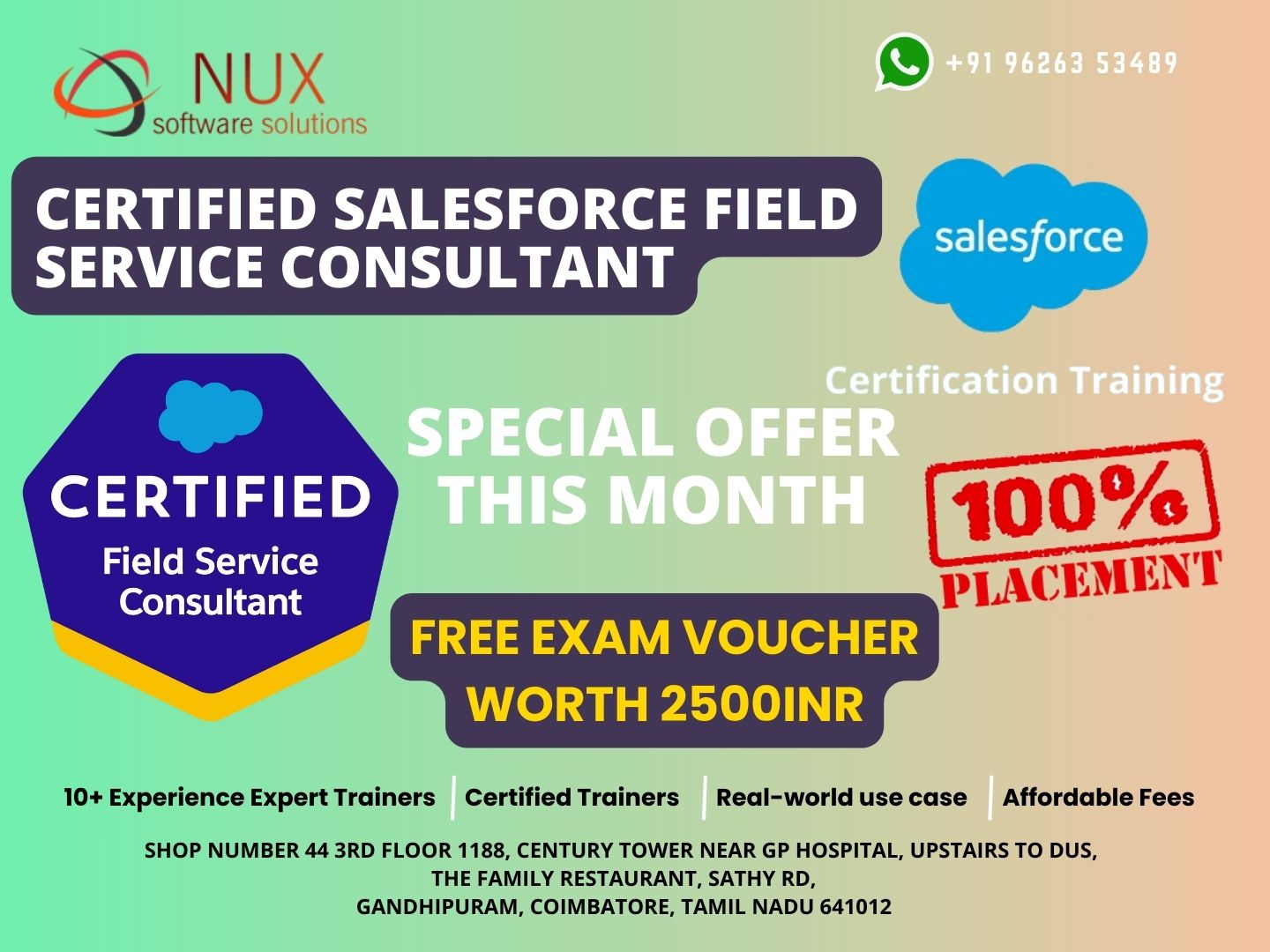Salesforce Integration Architect


NuxSoftware Training & Certification Solutions in Coimbatore excels in offering comprehensive training for Salesforce Integration Architects. Our advanced programs are designed with industry-leading trainers and a supportive learning environment, ensuring a top-tier educational experience. The flexibility of 24/7 lab access enhances convenience and fosters practical learning opportunities.
Our international expert trainers bring real-time industry insights to the classroom, enriching the educational journey. We prioritize innovative learning methods and flexible training formats to cater to diverse career goals and individual aspirations. Whether you’re pursuing professional, corporate, live project, or industrial training, our programs promise substantial career growth opportunities.
The Salesforce Integration Architect certification is ideal for seasoned Salesforce professionals aiming to optimize organizational workflows and maximize Salesforce’s integration capabilities. It acknowledges expertise in designing and implementing efficient Salesforce integration solutions, essential for driving business success in today’s digital landscape.
Join NuxSoftware Training & Certification Solutions to elevate your career as a certified Salesforce Integration Architect. Gain practical skills, industry insights, and the certification necessary to excel in Salesforce integration strategies and propel your career forward.



